Portal:Spain
Portal maintenance status: (June 2018)
|
The Spain Portal (Bienvenido al portal español)

Spain, formally the Kingdom of Spain, is a country in Southwestern Europe with territories in North Africa. Featuring the southernmost point of continental Europe, It is the largest country in Southern Europe and the fourth-most populous European Union member state. Spanning across the majority of the Iberian Peninsula, its territory also includes the Canary Islands, in the Atlantic Ocean, the Balearic Islands, in the Mediterranean Sea, and the autonomous cities of Ceuta and Melilla, in Africa. Peninsular Spain is bordered to the north by France, Andorra, and the Bay of Biscay; to the east and south by the Mediterranean Sea and Gibraltar; and to the west by Portugal and the Atlantic Ocean. Spain's capital and largest city is Madrid, and other major urban areas include Barcelona, Valencia, Seville, Zaragoza, Málaga, Murcia and Palma de Mallorca.
In early antiquity, the Iberian Peninsula was inhabited by Celts, Iberians, and other pre-Roman peoples. With the Roman conquest of the Iberian Peninsula, the province of Hispania was established. Following the Romanization and Christianization of Hispania, the fall of the Western Roman Empire ushered in the inward migration of tribes from Central Europe, including the Visigoths, who formed the Visigothic Kingdom centred on Toledo. In the early eighth century, most of the peninsula was conquered by the Umayyad Caliphate, and during early Islamic rule, Al-Andalus became a dominant peninsular power centred on Córdoba. Several Christian kingdoms emerged in Northern Iberia, chief among them Asturias, León, Castile, Aragon, Navarre, and Portugal; made an intermittent southward military expansion and repopulation, known as the Reconquista, repelling Islamic rule in Iberia, which culminated with the Christian seizure of the Nasrid Kingdom of Granada in 1492. The dynastic union of the Crown of Castile and the Crown of Aragon in 1479 under the Catholic Monarchs is often considered the de facto unification of Spain as a nation-state. (Full article...)
 Featured article – show another
Featured article – show another
-
Image 1Muhammad II (Arabic: محمد الثاني) (also known by the epithet al-Faqih, "the canon-lawyer", c. 1235 – 8 April 1302; reigned from 1273 until his death) was the second Nasrid ruler of the Emirate of Granada in Al-Andalus on the Iberian Peninsula, succeeding his father, Muhammad I. Already experienced in matters of state when he ascended the throne, he continued his father's policy of maintaining independence in the face of Granada's larger neighbours, the Christian kingdom of Castile and the Muslim Marinid state of Morocco, as well as an internal rebellion by his family's former allies, the Banu Ashqilula. (Full article...)
-
Image 2

The Third of May 1808 in Madrid (also known as El tres de mayo de 1808 en Madrid or Los fusilamientos de la montaña del Príncipe Pío, or Los fusilamientos del tres de mayo. Commonly known as The Third of May 1808.) is a painting completed in 1814 by the Spanish painter Francisco Goya, now in the Museo del Prado, Madrid. In the work, Goya sought to commemorate Spanish resistance to Napoleon's armies during the occupation of 1808 in the Peninsular War. Along with its companion piece of the same size, The Second of May 1808 (or The Charge of the Mamelukes), it was commissioned by the provisional government of Spain at Goya's own suggestion shortly after the ousting of the French occupation and the restoration of King Ferdinand VII. (Full article...) -
Image 3The Lince (Spanish pronunciation: [ˈlinθe], meaning "Lynx") was a Spanish development programme for a proposed main battle tank that unfolded during the late 1980s and early 1990s. The intention was to replace the M47 and M48 Patton tanks that the Spanish Army had received under the U.S. Mutual Defense Assistance Act between 1954 and 1975, and to complement the AMX-30E tanks manufactured for the army during the 1970s. Companies from several nations, such as German Krauss-Maffei, Spanish Santa Bárbara, and French GIAT, made bids for the development contract. The main priorities were mobility and firepower, with secondary priority placed on protection; the Lince tank was to have been lighter and faster than its competitors. To achieve a sufficient level of firepower and protection, the Lince was to use Rheinmetall's 120 mm L/44 tank-gun and German composite armour from the Leopard 2A4. (Full article...)
-
Image 4

Plate 34: Por una navaja (For a clasp knife). A garroted priest grasps a crucifix in his hands. Pinned to his chest is a description of the crime for which he was killed—possession of a knife.
The Disasters of War (Spanish: Los desastres de la guerra) is a series of 82 prints created between 1810 and 1820 by the Spanish painter and printmaker Francisco Goya (1746–1828). Although Goya did not make known his intention when creating the plates, art historians view them as a visual protest against the violence of the 1808 Dos de Mayo Uprising, the subsequent cruel war that ended in Spanish victory in the Peninsular War of 1808–1814 and the setbacks to the liberal cause following the restoration of the Bourbon monarchy in 1814. During the conflicts between Napoleon's French Empire and Spain, Goya retained his position as first court painter to the Spanish crown and continued to produce portraits of the Spanish and French rulers. Although deeply affected by the war, he kept private his thoughts on the art he produced in response to the conflict and its aftermath. (Full article...) -
Image 5The Nyon Conference was a diplomatic conference held in Nyon, Switzerland, in September 1937 to address attacks on international shipping in the Mediterranean Sea during the Spanish Civil War. The conference was convened in part because Italy had been carrying out unrestricted submarine warfare, although the final conference agreement did not accuse Italy directly; instead, the attacks were referred to as "piracy" by an unidentified body. Italy was not officially at war, nor did any submarine identify itself. The conference was designed to strengthen non-intervention in the Spanish Civil War. The United Kingdom and France led the conference, which was also attended by Bulgaria, Egypt, Greece, Romania, Turkey, the Soviet Union and Yugoslavia. (Full article...)
-
Image 6Nasr (1 November 1287 – 16 November 1322), full name Abu al-Juyush Nasr ibn Muhammad (Arabic: أبو الجيوش نصر بن محمد), was the fourth Nasrid ruler of the Emirate of Granada from 14 March 1309 until his abdication on 8 February 1314. He was the son of Muhammad II al-Faqih and Shams al-Duha. He ascended the throne after his brother Muhammad III was dethroned in a palace revolution. At the time of his accession, Granada faced a three-front war against Castile, Aragon and the Marinid Sultanate, triggered by his predecessor's foreign policy. He made peace with the Marinids in September 1309, ceding to them the African port of Ceuta, which had already been captured, as well as Algeciras and Ronda in Europe. Granada lost Gibraltar to a Castilian siege in September, but successfully defended Algeciras until it was given to the Marinids, who continued its defense until the siege was abandoned in January 1310. James II of Aragon sued for peace after Granadan defenders defeated the Aragonese siege of Almería in December 1309, withdrawing his forces and leaving the Emirate's territories by January. In the ensuing treaty, Nasr agreed to pay tributes and indemnities to Ferdinand IV of Castile and yield some border towns in exchange for seven years of peace. (Full article...)
-
Image 7

Joseph Anton Lopez SJ (born José Antonio López; October 4, 1779 – October 5, 1841) was a Mexican Catholic priest and Jesuit. Born in Michoacán, he studied canon law at the Colegio de San Nicolás and the Royal and Pontifical University of Mexico. He became acquainted with the future Empress consort Ana María Huarte and was made chaplain to the future imperial family. He was later put in charge of the education of all the princes in Mexico. Lopez was a close ally of Emperor Agustín de Iturbide, residing in Madrid for four years as his attorney and political informant, and accompanying him during his exile to Italy and England. (Full article...) -
Image 8Dinar minted in Yusuf I's name
Abu al-Hajjaj Yusuf ibn Ismail (Arabic: أبو الحجاج يوسف بن إسماعيل; 29 June 1318 – 19 October 1354), known by the regnal name al-Muayyad billah (المؤيد بالله, "He who is aided by God"), was the seventh Nasrid ruler of the Emirate of Granada on the Iberian Peninsula. The third son of Ismail I (r. 1314–1322), he was Sultan between 1333 and 1354, after his brother Muhammad IV (r. 1325–1333) was assassinated. (Full article...) -
Image 9Battle of Chiclana, 5 March 1811, Louis-François Lejeune
The Battle of Barrosa (Chiclana, 5 March 1811, also known as the Battle of Chiclana or Battle of Cerro del Puerco) was part of an unsuccessful manoeuvre by an Anglo-Iberian force to break the French siege of Cádiz during the Peninsular War. During the battle, a single British division defeated two French divisions and captured a regimental eagle. (Full article...) -
Image 10
The Battle of Halmyros, known by earlier scholars as the Battle of the Cephissus or Battle of Orchomenos, was fought on 15 March 1311, between the forces of the Frankish Duchy of Athens and its vassals under Walter of Brienne against the mercenaries of the Catalan Company, resulting in a decisive victory for the mercenaries. (Full article...) -
Image 11The Battle of Pavia, by an unknown Flemish artist
The Italian War of 1521–1526, sometimes known as the Four Years' War, (French: Sixième guerre d'Italie) was a part of the Italian Wars. The war pitted Francis I of France and the Republic of Venice against the Holy Roman Emperor Charles V, Henry VIII of England, and the Papal States. It arose from animosity over the election of Charles as Emperor in 1519–1520 and from Pope Leo X's need to ally with Charles against Martin Luther. (Full article...) -
Image 12
The Second Punic War (218 to 201 BC) was the second of three wars fought between Carthage and Rome, the two main powers of the western Mediterranean in the 3rd century BC. For 17 years the two states struggled for supremacy, primarily in Italy and Iberia, but also on the islands of Sicily and Sardinia and, towards the end of the war, in North Africa. After immense materiel and human losses on both sides, the Carthaginians were once again defeated. Macedonia, Syracuse and several Numidian kingdoms were drawn into the fighting, and Iberian and Gallic forces fought on both sides. There were three main military theatres during the war: Italy, where Hannibal defeated the Roman legions repeatedly, with occasional subsidiary campaigns in Sicily, Sardinia and Greece; Iberia, where Hasdrubal, a younger brother of Hannibal, defended the Carthaginian colonial cities with mixed success before moving into Italy; and Africa, where Rome finally won the war. (Full article...) -
Image 13Conquistador Pedro de Alvarado led the initial efforts to conquer Guatemala.
In a protracted conflict during the Spanish colonization of the Americas, Spanish colonisers gradually incorporated the territory that became the modern country of Guatemala into the colonial Viceroyalty of New Spain. Before the conquest, this territory contained a number of competing Mesoamerican kingdoms, the majority of which were Maya. Many conquistadors viewed the Maya as "infidels" who needed to be forcefully converted and pacified, disregarding the achievements of their civilization. The first contact between the Maya and European explorers came in the early 16th century when a Spanish ship sailing from Panama to Santo Domingo was wrecked on the east coast of the Yucatán Peninsula in 1511. Several Spanish expeditions followed in 1517 and 1519, making landfall on various parts of the Yucatán coast. The Spanish conquest of the Maya was a prolonged affair; the Maya kingdoms resisted integration into the Spanish Empire with such tenacity that their defeat took almost two centuries. (Full article...) -
Image 14

Boletus aereus, commonly known as the dark cep, bronze bolete, or queen bolete, is a highly prized and much sought-after edible mushroom in the family Boletaceae. The bolete is widely consumed in Spain (Basque Country and Navarre), France, Italy, Greece, and generally throughout the Mediterranean. Described in 1789 by French mycologist Pierre Bulliard, it is closely related to several other European boletes, including B. reticulatus, B. pinophilus, and the popular B. edulis. Some populations in North Africa have in the past been classified as a separate species, B. mamorensis, but have been shown to be phylogenetically conspecific to B. aereus and this taxon is now regarded as a synonym. (Full article...) -
Image 15

Hieronymus Bosch, The Garden of Earthly Delights, oil on oak panels, 205.5 cm × 384.9 cm (81 in × 152 in), Museo del Prado, Madrid
The Garden of Earthly Delights (Dutch: De tuin der lusten, lit. 'The garden of lusts') is the modern title given to a triptych oil painting on oak panel painted by the Early Netherlandish master Hieronymus Bosch, between 1490 and 1510, when Bosch was between 40 and 60 years old. Bosch's religious beliefs are unknown, but interpretations of the work typically assume it is a warning against the perils of temptation. The outer panels place the work on the Third Day of Creation. The intricacy of its symbolism, particularly that of the central panel, has led to a wide range of scholarly interpretations over the centuries. (Full article...) -
Image 16

North View of Gibraltar from Spanish Lines by John Mace (1782)
The history of Gibraltar, a small peninsula on the southern Iberian coast near the entrance of the Mediterranean Sea, spans over 2,900 years. The peninsula has evolved from a place of reverence in ancient times into "one of the most densely fortified and fought-over places in Europe", as one historian has put it. Gibraltar's location has given it an outsized significance in the history of Europe and its fortified town, established in the Middle Ages, has hosted garrisons that sustained numerous sieges and battles over the centuries. (Full article...) -
Image 17
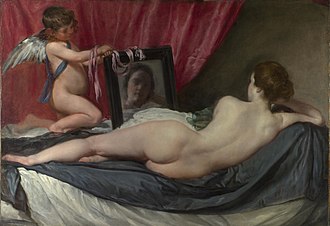
Rokeby Venus, c. 1647–1651. 122 cm × 177 cm (48 in × 70 in). National Gallery, London.
The Rokeby Venus (/ˈroʊkbi/ ROHK-bee; also known as The Toilet of Venus, Venus at her Mirror, Venus and Cupid; Whose original title was "The Mirror's Venus" Spanish: La Venus del espejo) is a painting by Diego Velázquez, the leading artist of the Spanish Golden Age. Completed between 1647 and 1651, and probably painted during the artist's visit to Italy, the work depicts the goddess Venus in a sensual pose, lying on a bed with her back facing the viewer, and looking into a mirror held by the Roman god of physical love, her son Cupid. The painting is in the National Gallery, London. (Full article...) -
Image 18The ruins of Santa María de Óvila in Spain, shown more than 75 years after the most striking architectural features were removed by agents of William Randolph Hearst
Santa María de Óvila is a former Cistercian monastery built in Spain beginning in 1181 on the Tagus River near Trillo, Guadalajara, about 90 miles (140 km) northeast of Madrid. During prosperous times over the next four centuries, construction projects expanded and improved the small monastery. Its fortunes declined significantly in the 18th century, and in 1835 it was confiscated by the Spanish government and sold to private owners who used its buildings to shelter farm animals. (Full article...) -
Image 19

A carillonneur plays the 56-bell carillon of the Plummer Building, Rochester, Minnesota, US
A carillon is a pitched percussion instrument that is played with a keyboard and consists of at least 23 bells. The bells are cast in bronze, hung in fixed suspension, and tuned in chromatic order so that they can be sounded harmoniously together. They are struck with clappers connected to a keyboard of wooden batons played with the hands and pedals played with the feet. Often housed in bell towers, carillons are usually owned by churches, universities, or municipalities. They can include an automatic system through which the time is announced and simple tunes are played throughout the day. (Full article...) -
Image 20The Colossus of Rhodes is a 1954 oil painting by the Spanish surrealist Salvador Dalí. It is one of a series of seven paintings he created for the 1956 film Seven Wonders of the World, each depicting one of the wonders. The work shows the Colossus of Rhodes, the ancient statue of the Greek titan-god of the sun, Helios. The painting was not used for the film and was donated to the Kunstmuseum Bern in 1981, where it remains. (Full article...)
-
Image 21The battle of New Carthage took place in early 209 BC when a Roman army under Publius Cornelius Scipio successfully assaulted New Carthage, the capital of Carthaginian Iberia, which was defended by a garrison under Mago. The battle was part of the Second Punic War. (Full article...)
-
Image 22A Wehrmacht Panzerkampfwagen I Ausf. A light tank on display at the Deutsches Panzermuseum Munster in Munster, Germany.
The Panzer I was a light tank produced by Nazi Germany in the 1930s. Its name is short for Panzerkampfwagen I (German for "armored fighting vehicle mark I"), abbreviated as Pz.Kpfw. I. The tank's official German ordnance inventory designation was Sd.Kfz. 101 ("special purpose vehicle 101"). (Full article...) -
Image 23
The AMX-30E (E stands for España, Spanish for Spain) is a Spanish main battle tank based on France's AMX-30. Although originally the Spanish government sought to procure the German Leopard 1, the AMX-30 was ultimately awarded the contract due to its lower price and the ability to manufacture it in Spain. 280 units were manufactured by Santa Bárbara Sistemas for the Spanish Army, between 1974 and 1983. (Full article...) -
Image 24
The Mercenary War, also known as the Truceless War, was a mutiny by troops that were employed by Carthage at the end of the First Punic War (264–241 BC), supported by uprisings of African settlements revolting against Carthaginian control. It lasted from 241 to late 238 or early 237 BC and ended with Carthage suppressing both the mutiny and the revolt. (Full article...) -
Image 25The siege of Nice by a Franco-Ottoman fleet in 1543 (drawing by Toselli, after an engraving by Aeneas Vico)
The Italian War of 1542–1546 was a conflict late in the Italian Wars, pitting Francis I of France and Suleiman I of the Ottoman Empire against the Holy Roman Emperor Charles V and Henry VIII of England. The course of the war saw extensive fighting in Italy, France, and the Low Countries, as well as attempted invasions of Spain and England. The conflict was inconclusive and ruinously expensive for the major participants. (Full article...)
Selected biography
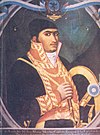
José María Teclo Morelos y Pavón (September 30, 1765, Valladolid, now Morelia, Michoacán – December 22, 1815, in San Cristóbal Ecatepec, State of México) was a Mexican priest and revolutionary rebel leader who led the Mexican War of Independence movement, assuming its leadership after the execution of Miguel Hidalgo in 1811. He was later captured by the Spanish colonial authorities and executed for treason in 1815.
Morelos was born into a poor family in the city of Valladolid, since renamed "Morelia" in his honor, in a house that is today a museum dedicated to his memory. He was a zambo of Amerindian, African from African American Registry and Spanish ancestry. His father was Manuel Morelos, a carpenter originally from Zindurio, a predominantly indigenous village a few kilometers west of Valladolid. His mother was Juana María Guadalupe Pérez Pavón, originally from San Juan Bautista de Apaseo, also near Valladolid. Valladolid was the seat of a bishop and of the government of the colonial Intendency of Michoacán. It was known as the "Garden of New Spain" because of its prosperity.
Selected picture
-
Image 1Photograph credit: Biblioteca Nacional de EspañaAna Santos Aramburo (born 1957) has been the director of the National Library of Spain since February 2013. Having received a degree in geography and history from the University of Zaragoza in Spain, she has spent much of her career working at the Complutense University of Madrid, first at the library of the Faculty of Economics and Business Sciences, and later serving as deputy director of the university library. Later she served as Director of the Historical Library Marquis of Valdecilla, General Director of Libraries and Archives of the City of Madrid, and Director of Cultural Action at the National Library. This photograph of Santos shows her at the headquarters of the National Library of Spain in Madrid.
-
Image 2Artist: UnknownFerdinand I, Holy Roman Emperor, is represented in this anonymous portrait as a young archduke in his native Spain. He left Spain in his early twenties, to start his life as future King of the Romans and successor to his grandfather, Maximilian I. His older brother Charles eventually succeeded as Holy Roman Emperor, but Ferdinand was elected after Charles's abdication. Philip, Charles's son, inherited Spain and became King Philip II of Spain. Ferdinand ruled between 1558 and 1564, for nearly six years.
-
Image 3
An exterior view of the Museo del Prado. Credit: FanghongThe Museo del Prado is a museum and art gallery located in Madrid; the capital of Spain. It features one of the world's finest collections of European art, from the 12th century through the early 19th century, based on the former Spanish Royal Collection. -
Image 4Photograph: Diego DelsoMoros is a municipality in the province of Zaragoza, Spain. Located in the Sistema Ibérico mountain range, the village lies on a hill, with the church and former town hall at the top, the residences in the middle, and the sheep pens at the bottom. The population of Moros has been steadily decreasing in recent decades, and was 478 in 2006.
-
Image 5Painting: Marià FortunyThe Spanish Wedding is an oil on panel painting by Marià Fortuny completed over a two-year period ending in 1870. It depicts the signing of a wedding contract in 18th century Spain and was influenced heavily by the works of Francisco Goya, whom the artist admired. It is currently exhibited at the National Art Museum of Catalonia.
-
Image 6
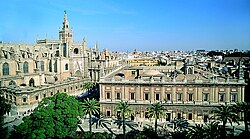
Seville Cathedral. Credit: Seville Tourism Bureau
The Cathedral of Seville, formally Catedral de Santa María de la Sede (Cathedral of Saint Mary of the See) was begun in 1402, with construction continuing into the 16th century. It is the largest of all Roman Catholic cathedrals (Saint Peter's Basilica not being a cathedral) and also the largest Medieval Gothic religious building, in terms of both area and volume. -
Image 7Smoke coming from Madrid Barajas International Airport after the 2006 Madrid Barajas International Airport bombing. The terrorist incident occurred on the morning of December 30, 2006, when an explosion took place in the carpark building attached to Terminal 4 of the airport.
-
Image 8Architecture credit: José Grases Riera; photographed by Carlos DelgadoThe Monument to Alfonso XII is located in Buen Retiro Park (El Retiro) in Madrid, Spain. Measuring 30 m (98 ft) high, 86 m (282 ft) long, and 58 m (190 ft) wide, it has at its center an equestrian statue of King Alfonso XII, cast in bronze by the Spanish sculptor Mariano Benlliure in 1904. The monument is situated on the eastern edge of an artificial lake near the center of the park and was inaugurated on 6 June 1922.
-
Image 9Banknote: Bank of SpainThe Spanish peseta is a former currency of Spain and, alongside the French franc, a former de facto currency in Andorra. It was introduced in 1868, replacing the peso, at a time when Spain was considering joining the Latin Monetary Union. Spain joined the euro in 1999, and the peseta was replaced by euro notes and coins in 2002.
This picture shows a 1000 peseta banknote from 1957. The obverse depicts the Catholic Monarchs while the reverse shows the coat of arms of Spain. -
Image 10Image: Royal Household of Spain; Restoration: Lise BroerA Grant of Arms by Philip II of Spain to Alonso de Mesa and Hernando de Mesa, signed 25 November 1566. In Spanish heraldry, coats of arms were granted based almost entirely on military service, which made it possible for commoners to join the ranks of the Spanish nobility. Also unique to Spain was that titles could be inherited through females and via illegitimacy.
-
Image 11The peaks of the Central Massif overlook the village of Sotres in Cabrales, located in the Picos de Europa, a mountain range in northern Spain forming part of the Cantabrian Mountains. The name (literally: "Peaks of Europe") is believed to derive from being the first European landforms visible to mariners arriving from the Americas.
-
Image 12Gaspar de Guzmán, Count-Duke of Olivares (1587–1645) was a Spanish royal favourite of Philip IV and minister. As prime minister from 1621 to 1643, he over-exerted Spain in foreign affairs and unsuccessfully attempted domestic reform. His policies of committing Spain to recapture the Dutch Republic led to his major involvement in the Thirty Years War. This portrait was completed in 1634, with its composition referring to Olivares' military leadership in the service of King Philip.
-
Image 13Coin design credit: Duchy of ParmaThe doubloon was a Spanish gold coin worth two escudos or 32 reales weighing 6.867 grams (0.221 troy ounces), introduced in 1537. It became the model for several other gold coins issued in Europe, including this 1626 two-doppie gold coin issued in Piacenza in northern Italy by the Duchy of Parma, depicting Odoardo Farnese, Duke of Parma, on the obverse. The coin is part of the National Numismatic Collection at the National Museum of American History.
-
Image 14

The Battle of Ravenna Credit: Ary Scheffer
An artists portrayal of the Battle of Ravenna (1512). This artwork also shows the death of Gaston de Foix, as well as the general scene during the time of battle. -
Image 15The Madrid Metro is a rapid transit system serving the Spanish capital, Madrid. It was inaugurated in 1919 by King Alfonso, with a single line which ran for 3.48 km (2.16 mi) between Puerta del Sol and Cuatro Caminos, with eight stops. The present system has 301 stations on 13 lines plus one branch line, totalling 294 km (183 mi).
-
Image 17

Las Médulas mine. Credit: Rayet
Las Médulas, located near the town of Ponferrada in León province, Spain, used to be the most important gold mine in the Roman Empire. Las Médulas Cultural Landscape is listed by the UNESCO as one of the World Heritage Sites. -
Image 18Photograph: Diego DelsoThe Assut de l'Or Bridge is a white single-pylon cable-stayed bridge in the City of Arts and Sciences, Valencia, Spain. Completed in 2008, it was designed by Valencian architect and civil engineer Santiago Calatrava as a variant of his cantilever spar cable-stayed bridge in Seville.
-
Image 20Painting credit: Francisco GoyaCharles IV of Spain and His Family is a portrait of the royal family of Spain painted by Francisco Goya in 1800 and 1801. King Charles IV, his wife Maria Luisa of Parma, and his children and relatives are dressed in the height of contemporary fashion, lavishly adorned with jewelry and the sashes of the order of Charles III. The artist does not attempt to flatter the family; instead the group portrait is unflinchingly realist, both in detail and tone. The artist, seated at his easel, is visible in the background. The painting is in the collection of the Museo del Prado in Madrid.
-
Image 21

A portrait of Francisco Martínez de la Rosa Credit: Petronas
Francisco de Paula Martinez de la Rosa (10 March 1789 — 1862) was a dramatist and statesman. Rosa was born in Granada, and educated at the University of Granada. Rosa became well known after epigrams he performed on celebrities. -
Image 22Photo credit: David IliffThe Tagus River, seen here passing through the World Heritage listed city of Toledo, Spain. It is the longest river on the Iberian Peninsula at 1,038 kilometres (645 mi). It begins its journey in the Albarracín mountains in Spain, and follows a very constricted course for much of its length before reaching the Atlantic Ocean in Portugal.
Did you know...
- ... that after fleeing the Spanish Civil War to Venezuela, Spanish anarchist Concha Liaño became a supporter of Hugo Chávez?
- ... that some California schoolchildren build dioramas when learning about their state's Spanish missions?
- ... that Juan de Casas, the Spanish military governor of Venezuela, cried after the French demanded that he accept a Frenchman as king?
- ... that Irish International Brigader Tommy Wood had only been in Spain for 18 days when he was killed at the Battle of Lopera during the Spanish Civil War?
- ... that wealth generated by tourism in Barcelona is claimed to be a reason for increased social inequality, causing activists to protest against overtourism?
- ... that alongside a 7th-century BC Phoenician shipwreck, two additional wrecks from various historical periods were unearthed in Bajo de la Campana, situated off the coast of Cartagena, Spain?
 Good article – show another
Good article – show another
-
Image 1Prime Minister Mariano Rajoy, taking the floor during the debate on the motion of no confidence on 13 June 2017.
A motion of no confidence in the Spanish government of Mariano Rajoy was debated and voted in the Congress of Deputies between 13 and 14 June 2017. It was brought by Unidos Podemos leader Pablo Iglesias as a result of a corruption case involving high-ranking People's Party (PP) officials, amid accusations of maneuvers from the Rajoy government to influence the judicial system in order to cover-up the scandal. This was the third vote of no confidence held in Spain since the country's transition to democracy—after the unsuccessful 1980 and 1987 ones—as well as the first not to be registered by the main opposition party at the time. (Full article...) -
Image 2Location of Valencia within Spain
Valencia (Valencian: València) is one of the 52 constituencies (Spanish: circunscripciones) represented in the Congress of Deputies, the lower chamber of the Spanish parliament, the Cortes Generales. The constituency currently elects 16 deputies. Its boundaries correspond to those of the Spanish province of Valencia. The electoral system uses the D'Hondt method and a closed-list proportional representation, with a minimum threshold of three percent. (Full article...) -
Image 3
Badajoz (Spanish: [baðaˈxoθ] ⓘ; formerly written Badajos in English) is the capital of the Province of Badajoz in the autonomous community of Extremadura, Spain. It is situated close to the Portuguese border, on the left bank of the river Guadiana. The population in 2011 was 151,565. (Full article...) -
Image 4
The Jiloca (Spanish pronunciation: [xiˈloka]) is a river in Aragón, Spain, a tributary of the river Jalón, and part of the watershed of the Ebro basin. The course of the river runs through the provinces of Teruel and Zaragoza. It has a length of 126 kilometres (78 mi) and an average flow rate of 2.1 cubic metres per second (74 cu ft/s), although this varies between the seasons. The river flows in a generally north easterly direction from its source near Monreal del Campo. (Full article...) -
Image 5
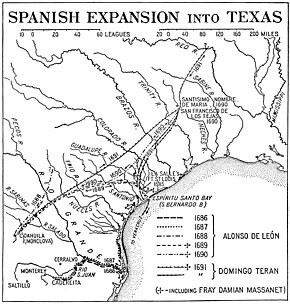
Trails taken by Spanish explorers from Mexico into Texas.
Spanish Texas was one of the interior provinces of the colonial Viceroyalty of New Spain from 1519 until 1821. Spain claimed ownership of the region in 1519. Slave raids by Spaniards into what became Texas began in the 16th century and created an atmosphere of antagonism with Native Americans (Indians) which would cause endless difficulties for the Spanish in the future. Spain did not attempt to establish a permanent presence until after France established the colony of Fort Saint Louis in 1685. In 1688, the French colony failed due to internal dissention and attacks by the Karankawa Indians. In 1690, responding to fear of French encroachment, Spanish explorer Alonso de León escorted several Catholic missionaries to east Texas, where they established the first mission in Texas. That attempt to establish a Spanish colony failed due to the hostility of the Caddo Indians. (Full article...) -
Image 6The Legazpi-Sikatuna Blood Compact or Sandugo (Spanish: Pacto de Sangre) was a blood compact, performed in the island of Bohol in the Philippines, between the Spanish explorer Miguel López de Legazpi and Datu Sikatuna, chieftain of Bohol, on March 16, 1565, to seal their friendship following tribal tradition. This is considered the first treaty of friendship between the Spaniards and Filipinos. "Sandugo" is a Visayan word which means "one blood". (Full article...)
-
Image 7'Defeat of the Dutch States Army near Wesel, 1595'. By Simon Frisius and Frans Hogenberg.
The Battle of the Lippe was a cavalry action fought on 2 September 1595 on the banks of the Lippe river, in Germany, between a corps of Spanish cavalry led by Juan de Córdoba and a corps of Dutch cavalry, supported by English troops, led by Philip of Nassau. The Dutch stadtholder Maurice of Nassau, taking advantage of the fact that the bulk of the Spanish army was busied in operations in France, besieged the town of Groenlo in Gelderland, but the elderly governor of the citadel of Antwerp, Cristóbal de Mondragón, organized a relief army and forced Maurice to lift the siege. Mondragón next moved to Wesel, positioning his troops on the southern bank of the Lippe river to cover Rheinberg from a Dutch attack. Maurice aimed then, relying on his superior army, to entice Mondragón into a pitched battle, planning to use an ambush to draw the Spanish army into a trap. However, the plan was discovered by the Spanish commander, who organized a counter-ambush. (Full article...) -
Image 8Paulus or Paul was a 7th-century Roman general in service of the Visigothic Kingdom. In 673, Paulus accompanied the Visigothic king Wamba (r. 672–680) on a campaign against the Basques, but when news reached them of a revolt led by the count Hilderic in Septimania, the northernmost and easternmost province of the kingdom, Paulus was dispatched with a considerable contingent of troops to put down the rebellion. Upon arrival in Septimania, Paulus not only completely disregarded his mission, but made himself the leader of the rebels and was anointed as king. Paulus managed to cement his authority over Septimania and the neighbouring province of Tarraconensis through the size of his army, and possibly through the two provinces being among the last properly Romanised regions of the kingdom. Titling himself as 'king of the east' (rex orientalis), Paulus ruled from Narbonne and sought to break away from Visigothic central control. (Full article...)
-
Image 9
Abel David Azcona Marcos (born 1 April 1988) is a Spanish artist, specializing in performance art. His work includes installations, sculptures, and video art. He is known as the "enfant terrible" of Spanish contemporary art. His first works dealt with personal identity, violence and the limits of pain; his later works are of a more critical, political and social nature. (Full article...) -
Image 10The 2011 season for Euskaltel–Euskadi began in January at the Tour Down Under and ended in October at the Giro di Lombardia. It was the team's eighteenth season as a professional cycling team, and its eleventh with UCI ProTeam – Trade Team 1 between 2001 and 2004 – status. As a UCI ProTeam, they were automatically invited and obligated to send a squad to every event on the UCI World Tour calendar. For the second year in a row, the traditionally all-Basque team added a French rider. This year, it was second-year professional Pierre Cazaux, who rode for FDJ in 2010. (Full article...)
-
Image 11
The siege of the Salamanca forts (17–27 June 1812) saw an 800-man Imperial French garrison directed by Lieutenant Colonel Duchemin defend three fortified convents in the city of Salamanca against the 48,000-strong Allied army led by Arthur Wellesley, Lord Wellington. During this time, the French commander Marshal Auguste de Marmont led a 40,000-man French army in an unsuccessful attempt to relieve the garrison. An Allied failure to bring sufficient artillery ammunition caused the siege to be prolonged. The garrison repulsed a premature British attempt to storm the fortified convents on 23 June, but finally surrendered four days later after an artillery bombardment breached one fort and set another one on fire. During his maneuvering, Marmont formed the idea that Wellington was only willing to act on the defensive. This mistaken notion would contribute to Marmont's defeat at the Battle of Salamanca a month later. (Full article...) -
Image 12Mariano Rajoy being congratulated by PSOE spokesperson Antonio Hernando after his successful investiture as prime minister on 29 October 2016.
Attempts to form a government in Spain followed the inconclusive Spanish general election of 20 December 2015, which failed to deliver an overall majority for any political party. As a result, the previous People's Party (PP) cabinet headed by Mariano Rajoy was forced to remain in a caretaker capacity until the election of a new government. (Full article...) -
Image 13Torres with Atlético Madrid in 2017
Fernando José Torres Sanz (Spanish pronunciation: [feɾˈnando ˈtores]; born 20 March 1984) is a Spanish football manager and former player who played as a striker. He is the current manager of Atlético Madrid B. Due to his consistent goalscoring as a young player, Torres came to be nicknamed El Niño ('The Kid'), which stuck with him throughout his career. In his prime, he was known for his pace, prolific goalscoring, and heading. (Full article...) -
Image 14Picture by Johann Jakob Wick illustrating his report about the Battle of Zutphen, published on 12 October 1586
The Battle of Zutphen was fought on 22 September 1586, near the village of Warnsveld and the town of Zutphen, the Netherlands, during the Eighty Years' War. It was fought between the forces of the United Provinces of the Netherlands, aided by the English, against the Spanish. In 1585, England signed the Treaty of Nonsuch with the States-General of the Netherlands and formally entered the war against Spain. Robert Dudley, Earl of Leicester, was appointed as the Governor-General of the Netherlands and sent there in command of an English army to support the Dutch rebels. When Alessandro Farnese, Duke of Parma and commander of the Spanish Army of Flanders, besieged the town of Rheinberg during the Cologne War, Leicester, in turn, besieged the town of Zutphen, in the province of Gelderland and on the eastern bank of the river IJssel. (Full article...) -
Image 15Pablo playing for Atlético Madrid in 2007
Pablo Ibáñez Tébar (born 3 August 1981), sometimes known as just Pablo, is a Spanish former professional footballer who played as a centre back. (Full article...) -
Image 16

Location of the Basque provinces within Spain and France
Erromintxela (Basque pronunciation: [eromintʃela] ⓘ) is the distinctive language of a group of Romani living in the Basque Country, who also go by the name Erromintxela. It is sometimes called Basque Caló or Errumantxela in English; caló vasco, romaní vasco, or errominchela in Spanish; and euskado-rromani or euskado-romani in French. Although detailed accounts of the language date to the end of the 19th century, linguistic research began only in the 1990s. (Full article...) -
Image 17Ciutat Morta ([siwˈtat ˈmɔr.tə], "Dead City") is a 2013 Catalan documentary about the 4F case, directed by Xavier Artigas and Xapo Ortega. The film covers the repercussions of the events of February 4, 2006, when a Guàrdia Urbana officer in Barcelona was grievously injured and several people were arrested. This resulted in a long court-case and ultimately four people were convicted and imprisoned, one of whom committed suicide. (Full article...)
-
Image 18

Hypericum grandifolium, the large-leaved St John's wort, is a species of flowering plant in the family Hypericaceae. The plant is a bushy shrub that can grow to almost 2 meters tall. It has large leaves, golden yellow petals, and seed capsules that split open. H. grandifolium is native to the Canary Islands and Madeira in Macaronesia, but has become invasive in other regions, including California, after escaping from cultivation as an ornamental plant. It is parasitized by wasps and fungi, and is capable of reproducing through its rhizomes. (Full article...) -
Image 19The action of 26 April 1797 was a minor naval engagement during the French Revolutionary Wars in which a Spanish convoy of two frigates was trapped and defeated off the Spanish town of Conil de la Frontera by British ships of the Cadiz blockade. The British vessels, the ship of the line HMS Irresistible and the Fifth-rate frigate HMS Emerald, were significantly more powerful than the Spanish frigates, which were on the last stage of a voyage carrying treasure from Havana, Cuba, to the Spanish fleet base of Cadiz. (Full article...)
-
Image 20
On 22 February 2019 at the Embassy of North Korea in Madrid, the political group Free Joseon, which is opposed to the incumbent Kim Jong Un regime of North Korea, is alleged by Spanish and American authorities to have attacked and raided the embassy, while the group maintains that they were invited in to facilitate a high-level defection. A group of individuals stole mobile telephones, two USB flash drives and a hard drive from the embassy and handed them to the Federal Bureau of Investigation (FBI) in the United States. The event took place after the Singapore summit between North Korea (DPRK) and the United States and prior to the approach of the Hanoi summit. As of early April 2019, one person had been arrested in connection with the incident and two international arrest warrants had been issued by the Spanish Audiencia Nacional. The suspected perpetrators are citizens of Mexico, the US and South Korea, although the latter two governments denied any connection with the incident. (Full article...) -
Image 21

Political map of the Emirate of Granada
Abu al-Hajjaj Yusuf ibn Muhammad (Arabic: أبو الحجاج يوسف بن محمد; c. 1356 – 5 October 1392) was sultan of the Emirate of Granada, the last Muslim state in the Iberian Peninsula, from January 1391 until his death. He was the 11th sultan of the Nasrid dynasty and the first son of his predecessor, Muhammad V (r. 1354–1359, 1362–1391). (Full article...) -
Image 22Guardiola with Manchester City in 2017
Josep Guardiola Sala (born 18 January 1971), commonly known as Pep Guardiola (Catalan pronunciation: [ˈpɛb ɡwəɾðiˈɔlə]), is a Catalan professional football manager and former player from Spain who is the manager of Premier League club Manchester City. Guardiola is the only manager to win the continental treble twice, and he holds the record for the most consecutive league games won in La Liga, the Bundesliga and the Premier League. He is considered to be one of the greatest managers of all time. (Full article...) -
Image 23Patricio Arabolaza in front of Eduardo Teus' goal during the match
The 1918 Copa del Rey Final was an association football match between Real Unión and Madrid FC on 12 May 1918, at the O'Donnell Stadium in Madrid. It was the deciding match of the Spanish cup competition, the Copa del Rey. Real Unión beat Madrid FC 2–0 to win their first title. Unión's captain, forward Juan Legarreta, scored both goals. The final was attended by approximately 10,000 spectators. (Full article...) -
Image 24Aftermath of the aerial bombardment of Guernica
German involvement in the Spanish Civil War commenced with the outbreak of war in July 1936, with Adolf Hitler immediately sending in air and armored units to assist General Francisco Franco and his Nationalist forces. In opposition, the Soviet Union sent in smaller forces equipped with more advanced equipment to assist the Republican government, while Britain and France and two dozen other countries set up an embargo on any munitions or soldiers into Spain. Nazi Germany also signed the embargo, but simply ignored it. (Full article...) -
Image 25"Esperanza" (English: "Hope") is a song by Spanish singer Enrique Iglesias for his third studio album Cosas del Amor (1998). It was co-written by Iglesias and Chein García-Alonso with Rafael Pérez-Botija handling its production. A power ballad, it is a confessional song of love and forgiveness. Upon "Esperanza"'s release, one reviewer lauded Iglesias's vocals and the song's arrangements while another found it too similar to his debut single "Si Tú Te Vas". Filmed in Malibu, California, the accompanying music video for "Esperanza" was directed by Emmanuel Lubezki, which won Video of the Year at the 11th Annual Lo Nuestro Awards in 1999. "Esperanza" also won "Song of the Year" and an American Society of Composers, Authors and Publishers (ASCAP) Latin Award in the same year. Commercially, it reached number one in Guatemala, Nicaragua, and Panama as well as the Billboard Hot Latin Songs and Latin Pop Airplay charts in the United States, while becoming top-five hit in Colombia, Costa Rica, Honduras and El Salvador. (Full article...)
General images
-
Image 1The greatest extent of the Visigothic Kingdom of Toulouse, c. 500, showing Territory lost after Vouillé in light orange (from History of Spain)
-
Image 2The explosion of the USS Maine launched the Spanish–American War in April 1898 (from History of Spain)
-
Image 5The promulgation of the Constitution of 1812, oil painting by Salvador Viniegra. (from History of Spain)
-
Image 6Felipe González signing the treaty of accession to the European Economic Community on 12 June 1985. (from History of Spain)
-
Image 7Cabeza de Luis Buñuel, sculptor's work by Iñaki, in the center Buñuel Calanda. (from Culture of Spain)
-
Image 9Charles I of Spain (better known in the English-speaking world as the Holy Roman Emperor Charles V) was the most powerful European monarch of his day. (from History of Spain)
-
Image 12Panoramic view of the lower level patio of the Palace (from Spanish Golden Age)
-
Image 15El paseo de las Delicias, a 1784–1785 painting by Ramón Bayeu depicting a meeting of members of the aristocracy in the aforementioned location. (from History of Spain)
-
Image 17Visigothic church, San Pedro de la Nave. Zamora. Spain (from History of Spain)
-
Image 19Ethnology of the Iberian Peninsula c. 200 BC (from History of Spain)
-
Image 20Execution of Torrijos and his men in 1831. Ferdinand VII took repressive measures against the liberal forces in his country. (from History of Spain)
-
Image 21Illustration depicting the (now lost) Luzaga's Bronze, an example of the Celtiberian script. (from History of Spain)
-
Image 22The Iberian Peninsula in the 3rd century BC (from History of Spain)
-
Image 231894 satirical cartoon depicting the tacit accord for seamless government change (turnismo) between the leaders of two dynastic parties (Sagasta and Cánovas del Castillo), with the country being lied in an allegorical fashion. (from History of Spain)
-
Image 26People's militias attacking on a Rebel position in Somosierra in the early stages of the war. (from History of Spain)
-
Image 27Map of territories that were once part of the Spanish Empire (from History of Spain)
-
Image 28Wedding portrait of the Catholic Monarchs (from History of Spain)
-
Image 29Proclamation of the Spanish Republic in Madrid (from History of Spain)
-
Image 30The Second of May 1808 was the beginning of the popular Spanish resistance against Napoleon. (from History of Spain)
-
Image 31Visigothic King Roderic haranguing his troops before the Battle of Guadalete (from History of Spain)
-
Image 33Francisco Franco and his appointed successor Prince Juan Carlos de Borbón. (from History of Spain)
-
Image 34The realms of Philip II of SpainTerritories administered by the Council of CastileTerritories administered by the Council of AragonTerritories administered by the Council of PortugalTerritories administered by the Council of ItalyTerritories administered by the Council of the IndiesTerritories appointed to the Council of Flanders(from Spanish Golden Age)
-
Image 39Recognition of the Duke of Anjou as King of Spain, under the name of Philip V, November 16, 1700 (from History of Spain)
-
Image 40Visigothic Hispania and its regional divisions in 700, prior to the Muslim conquest (from History of Spain)
-
Image 43Episode of the 1854 Spanish Revolution in the Puerta del Sol, by Eugenio Lucas Velázquez. (from History of Spain)
-
Image 44Louis XIV of France and Philip IV of Spain at the Meeting on the Isle of Pheasants in June 1660, part of the process to put an end to the Franco-Spanish War (1635–59). (from History of Spain)
-
Image 45Celebrations of the proclamation of the 2nd Republic in Barcelona. (from History of Spain)
-
Image 46The Christian kingdoms of Hispania and the Islamic Almohad empire c. 1210
-
Image 48Two women and a man during the siege of the Alcázar (from History of Spain)
-
Image 51The Port of Seville in the late 16th century. Seville became one of the most populous and cosmopolitan European cities after the expeditions to the New World. (from History of Spain)
-
Image 53Las Meninas (1656, English: The Maids of Honour) by Diego Velázquez (from Spanish Golden Age)
-
Image 58Plaza Mayor with the Casa de la Panadería to the left (from Spanish Golden Age)
-
Image 61Christopher Columbus leads expedition to the New World, 1492, sponsored by Spanish crown (from History of Spain)
-
Image 63The pro-independence forces delivered a crushing defeat to the royalists and secured the independence of Peru in the 1824 battle of Ayacucho. (from History of Spain)
-
Image 65Members of the provisional government after the 1868 Glorious Revolution, by Jean Laurent. (from History of Spain)
-
Image 66The Conquest of Tenochtitlán (from History of Spain)
-
Image 67In ictu oculi ("In the blink of an eye"), a vanitas by Juan de Valdés Leal (from Spanish Golden Age)
-
Image 68Detail of the votive crown of Recceswinth from the Treasure of Guarrazar, (Toledo-Spain) hanging in Madrid. The hanging letters spell [R]ECCESVINTHVS REX OFFERET [King R. offers this]. (from History of Spain)
-
Image 69The successful 1925 Alhucemas landing turned the luck in the Rif War towards Spain's favour. (from History of Spain)
-
Image 70The title page of the Gramática de la lengua castellana (1492), the first grammar of a modern European language to be published. (from History of Spain)
In the news
- 20 November 2024 – Russian invasion of Ukraine
- The U.S., Italian, Greek, and Spanish governments temporarily close their embassies in Kyiv, Ukraine, following threats of a "significant air attack" from Russia. (The Washington Times)
- 15 November 2024 –
- At least ten people are killed in a fire at a retirement residence in Villafranca de Ebro, Zaragoza, Spain. (The Washington Post)
- 13 November 2024 – 2024 Spanish floods
- Thousands of Spaniards living near river banks are evacuated following the issuing of AEMET's maximum weather alert in the Province of Málaga, Costa del Sol, and the Valencian Community caused by a new cold drop system. (The Independent)
- 12 November 2024 –
- Spanish writer Álvaro Pombo wins the Miguel de Cervantes Prize. (El País)
No recent news
Spain topics
Categories
WikiProjects
- Main project
- Related projects
WikiProject Basque • WikiProject Catalan-speaking Countries • WikiProject Galicia • Spanish Translation of the Week
Things you can do

- Add {{WikiProject Spain}} to article talk pages which have some relation to Spain
- Help write new Spain-related articles and improve and expand existent ones
- Assess: unassessed Spain-related articles
- Suggest: selected articles, biographies, pictures, did you knows? and quotes for this Portal
Related portals
Associated Wikimedia
The following Wikimedia Foundation sister projects provide more on this subject:
-
Commons
Free media repository -
Wikibooks
Free textbooks and manuals -
Wikidata
Free knowledge base -
Wikinews
Free-content news -
Wikiquote
Collection of quotations -
Wikisource
Free-content library -
Wikiversity
Free learning tools -
Wikivoyage
Free travel guide -
Wiktionary
Dictionary and thesaurus
- Pages with Spanish IPA
- Pages using Template:Post-nominals with customized linking
- Pages using the Phonos extension
- Pages including recorded pronunciations
- Pages with Basque IPA
- Pages with Catalan IPA
- Portals with triaged subpages from June 2018
- All portals with triaged subpages
- Portals with no named maintainer
- Automated article-slideshow portals with 41–50 articles in article list
- Random portal component with 6–10 available subpages
- Automated article-slideshow portals with 101–200 articles in article list







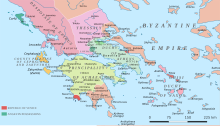
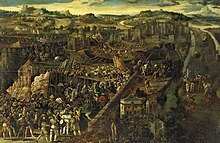
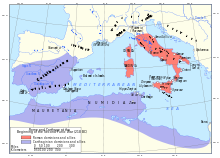
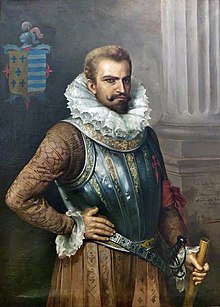






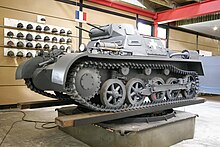
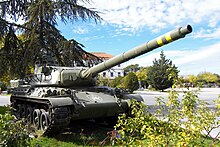


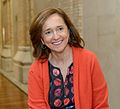




































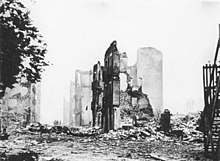













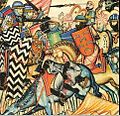






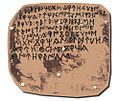































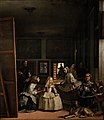













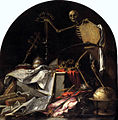
![Image 68Detail of the votive crown of Recceswinth from the Treasure of Guarrazar, (Toledo-Spain) hanging in Madrid. The hanging letters spell [R]ECCESVINTHVS REX OFFERET [King R. offers this]. (from History of Spain)](http://upload.wikimedia.org/wikipedia/commons/thumb/f/f2/Corona_de_%2829049230050%29.jpg/57px-Corona_de_%2829049230050%29.jpg)























